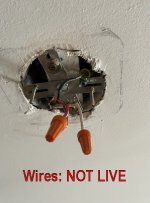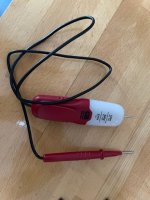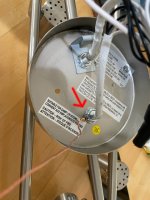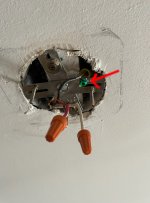I have a ceiling light fixture in my studio, and it went *pop* and died after I removed a bulb from one of the sockets. This was done while the light was on. I know that wasn’t the smartest thing to do, but in my defense I’ve done this not-smart thing countless times in the past and never had this problem. I’ve gone through the house with a fine tooth comb and reset every breaker I could find, and nothing works. Every other outlet in the room is working -- not a single other thing
anywhere isn't working. A voltage tester shows electricity going to the light switch, though the tester was unclear concerning the light fixture itself. The fixture works with six led gu10 mr16 bulbs. I swapped out the bulb with a new one, but that didn't do the trick.
I don't have anything against removing the fixture itself if I have to poke around in there to look for frayed or loose wires, but it's sort of a pain in the ass and I was wondering if there was something I could do first before going to that step.
This is the bulb:
The fixture is a NOMA led track light, but I can't link to it because it's no longer being produced. I've been using it on a daily basis for over two years, but it
really didn't like me removing that bulb while it was on.
And this is the voltage tester I'm using:
https://www.kleintools.com/catalog/electrical-testers/non-contact-voltage-tester-70-1000v-ac
Is there anything I can do before I have to drop a hundred bucks or so on an electrician?








